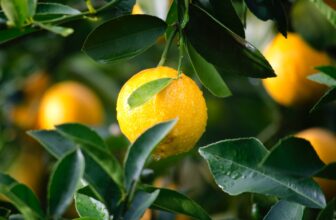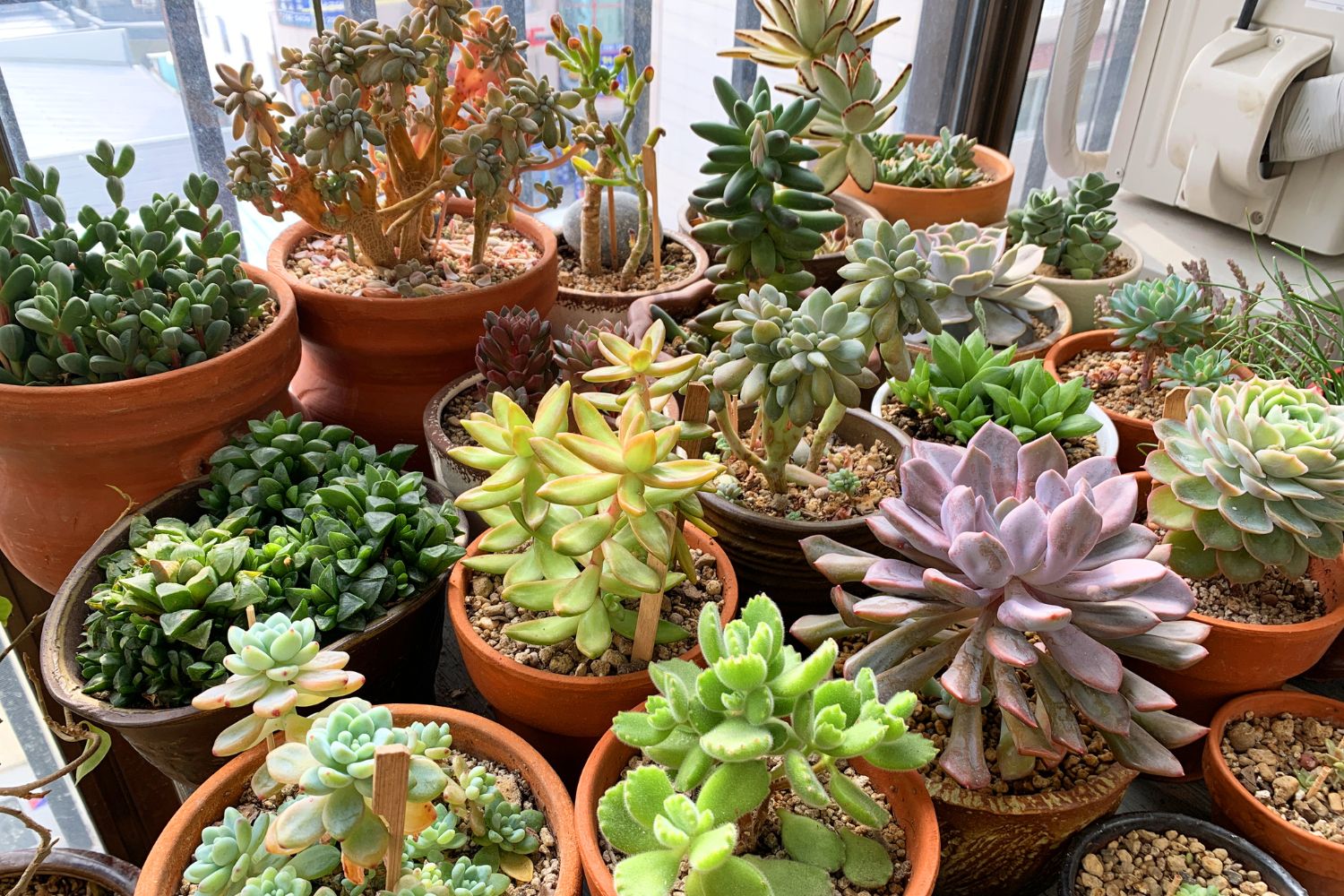
Table of Content
What makes a unique and picturesque garden that’s different from others? One of the obvious answers would be “creativity” and when it comes to this concept, succulents always make great plant options. This article explains how to make a beautiful jellyfish hanging basket which is one of the most innovative ways you can decorate your garden by using succulents.
What are Jellyfish Succulents?
It’s simply a collection of different kinds of succulents that are grown together in a hanging basket. They’ve got the name “jellyfish succulents” due to their very appearance that’s like the shape of a jellyfish in the ocean. The basket is arranged to be hung upside down, with shrubby-shaped succulents planted on the head or dome which is the top part of the structure, while the bottom is decorated with vine-like plants that will hang down or cascade making it look like the arms of a jellyfish.
At first glance, growing jellyfish succulents might look like a difficult and time-consuming task but with the right instructions, it is quite easy. Let’s take a look!
How To Make a Jellyfish Succulent – Step by Step
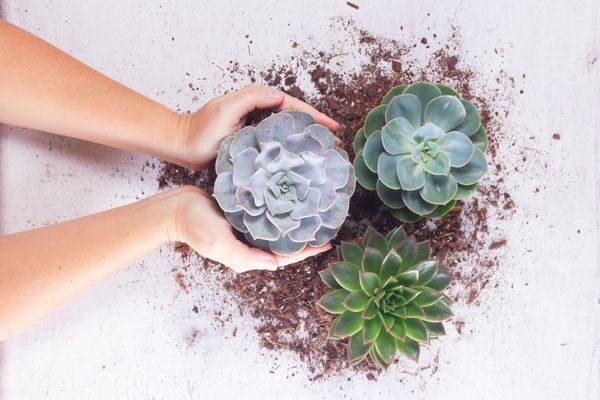
What do you need?
- A basket or a planter that has the shape of a jellyfish can be hung upside down. A moss basket is a good fit. If the basket needs a lining, then use a suitable type of moss (Fiber sphagnum moss/Oregon green moss/sheet moss)
- A piece of garden cloth or felt
- A piece of wire to secure the cloth onto the basket
- Two or more types of succulents (Should have both shrubs and trailing plants)
- Pre-prepared potting soil, ideally succulent or cactus soil
- A pair of gardening gloves
Preparing the Hanging Basket
- Fill the moss-lined basket with pre-prepared potting soil.
- Then cover and secure the top opening of the basket with a piece of gardening cloth before turning it over. This way the filled soil won’t fall out once you’ve turned the basket upside down.
- Plant the cascading succulents you chose then secure them around the plant with the gardening cloth or felt. Make sure that all the plant roots are planted properly into the soil inside and the cloth or felt is secured closely around the plant so that when the basket is turned upside down, the soil doesn’t fall out.
- Now you can turn the basket upside down. Use a bucket to place the basket on to hold it in place while you work on the dome top.
- Plant the small shrub-shaped succulents into the dome-shaped top.
- Water or mist the plants well.
- Carefully hang the basket at a spot you want.
The Ideal Growing Conditions
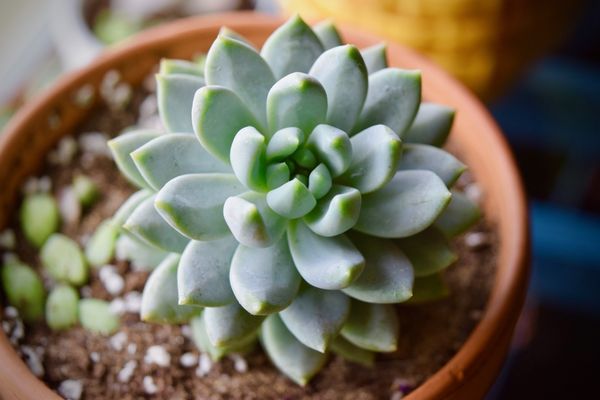
Potting Soil
You can either buy a commercial cactus or succulent potting mix in the market easily or preparing the potting soil at home is also an option. The chosen soil should have excellent draining qualities so use a loose, sandy soil type to begin with. To amend and improve the soil further, mix other materials such as pumice, perlite, and coarse bark.
Light
Hang the succulents in a place where they can get at least 6 hours of full sun throughout the day. For the ones kept indoors, use a fluorescent light to fulfill their lighting requirements.
Temperature
Succulents are naturally sensitive to temperatures lower than 45 degrees of Fahrenheit (7 Celsius) so in the winter they’re best grown or moved indoors in cooler regions.
Humidity
Try to maintain the humidity at least a level of 40% or higher. However, these succulents don’t prefer higher humid environments as well so it’s best to keep the humidity level between 40% to 60% if it’s possible.
Caring for Your Jellyfish Succulents
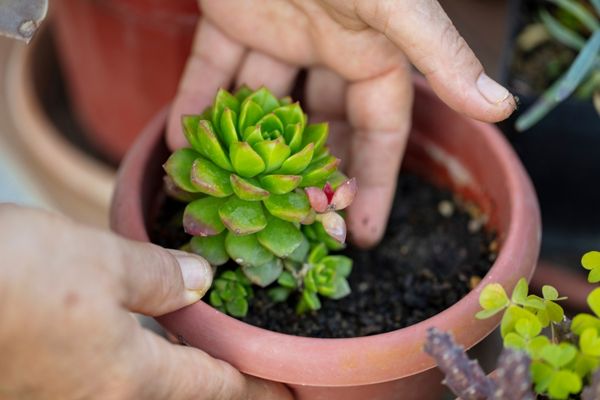
Watering
Waterlogged soil isn’t good for succulents at all as it causes them to rot and die. Therefore, let the soil dry out well between each watering. You can figure out when to water by simply sticking a pencil or a finger inside to see how wet the soil is.
Avoid wetting the leaves as much as possible to prevent any foliage infections. Water the soil thoroughly and deeply until the excess water drain from the bottom. Reduce or increase the watering accordingly depending on the rainfall and temperature changes in your area.
Fertilizing
Jellyfish succulents don’t need heavy feedings to thrive. Add a water-diluted, well-balanced liquid fertilizer to the plants at the beginning of their growing season annually. This can be either in the fall or spring since the succulents you planted are summer or winter growers.
Pest and Disease controlling
Most of the time, these succulents won’t get affected by lots of pests or infections. However, too much water can lead to root rot, foliage diseases, and some common garden pest infestations such as scales and mealybugs.
While the signs of fungal infections like discolored and decayed leaves are clearly visible to the outside, you may have to carefully check the underside of the plant leaves to figure out any pest infestations.
As controlling measures for pests, use an alcohol-soaked cotton ball to wipe them off or spray the succulents well with neem oil. In case the plants are infected with root rotting or another plant disease, pull out the sick plants immediately to separate them from the good ones. Spray the rest of the plants with a fungicide to prevent a relapse.
Changing the Soil
As succulents are slow growers, this won’t be necessary at least until a couple of years go by after the first planting. However, at some point, you need to change the soil to provide the plants with fresh growing media and nutrition. Once you’ve noticed that there are overgrown roots and less soil, it’s time to change the soil of the hanging basket.
- First, take off the garden cloth that covers the top of the basket and the loosened soil inside.
- Carefully take out the plants without damaging the roots.
- If it’s necessary, remove the old lining of moss as well before padding the basket with a new layer of moss.
- Fill the basket with fresh, pre-prepared potting soil.
- Remove any remaining old potting soil from the roots but don’t wash them as wet roots can rot easily.
- Trim and cut away any overgrown, damaged roots with a clean knife or a pair of scissors.
- Cover the basket again and plant the succulents back in. Remember that you can always replace any dead or removed plants with new ones. Take this as also a chance to make any new changes to the design and the color combination of your jellyfish succulents as you prefer.
Popular Succulent Varieties for Hanging Baskets
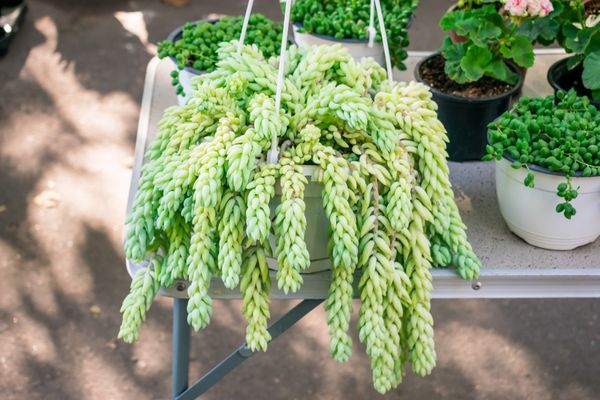
For the head of the jellyfish succulent
- Echeverias
- Gratopetalum
- Adromischus
- Aeonium
For the tentacles of the jellyfish
- String of Nickels (Dischidia nummularia)
- Trailing Jade (Kleinia petraea/ Senecio jacobsenii)
- Burro’s tail (Sedum morganianum)
- Fishbone Cactus (Selenicereus anthonyanus)
- Rat tail Cactus (Aporocactus flagelliformis)
- String of Pearls (Senecio rowleyanus)
- Ruby Necklace (Othonna capensis)
- Monkey’s tail (Hildewintera colademononis)
Wrapping Up
There you have it. You don’t need extravagant and expensive gardening structures or expert help to enhance the visuals of your surroundings. Just put your heart and mind to it together with a bit of novelty and creativity and you’ll be more than satisfied to see what you achieve. That’s why you should definitely give this money-saving and simple method a go.






